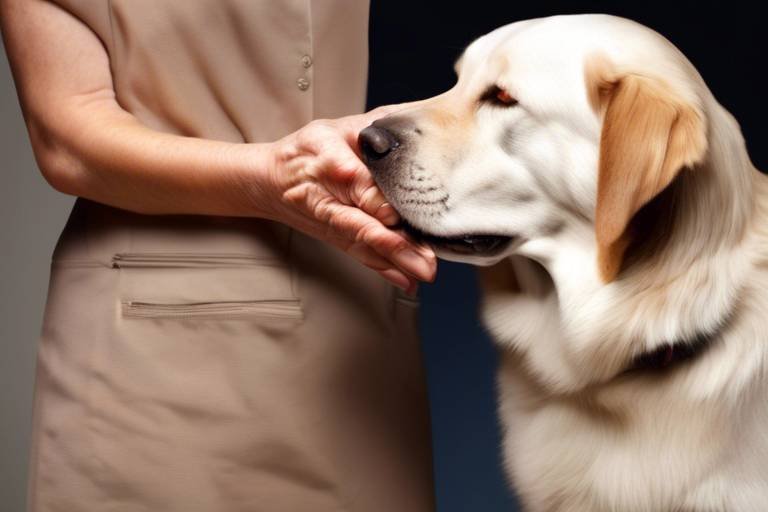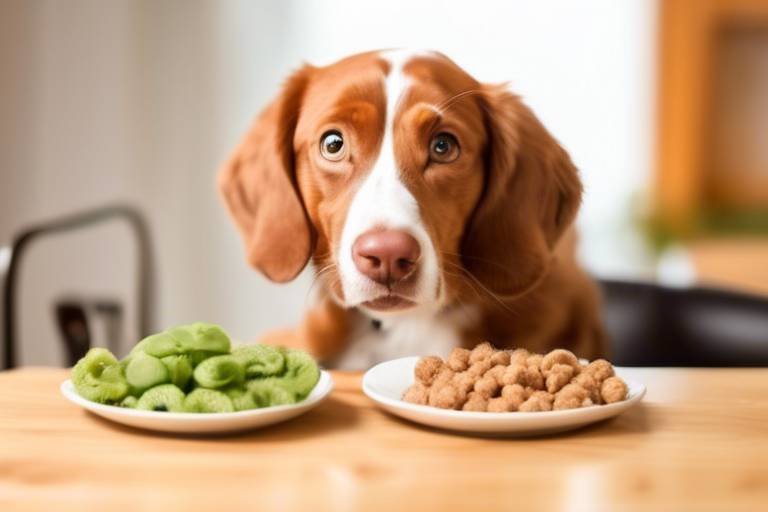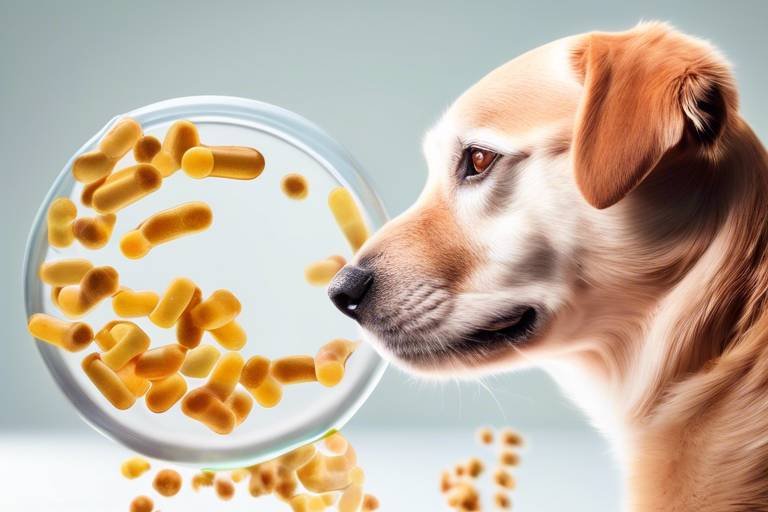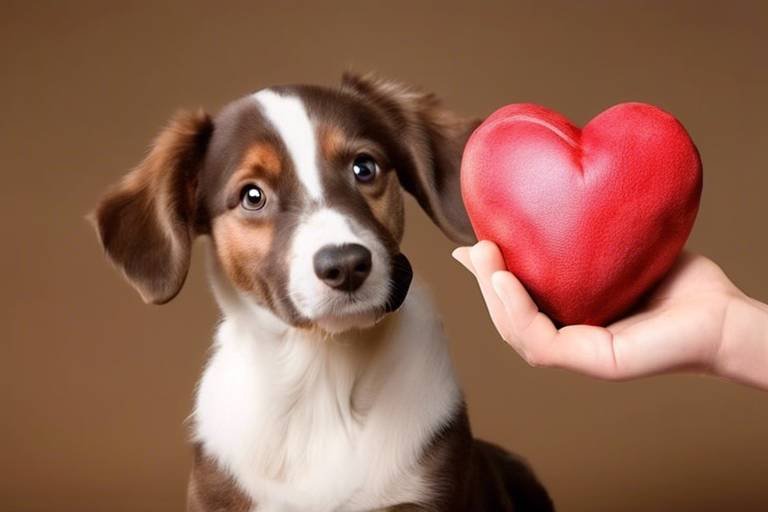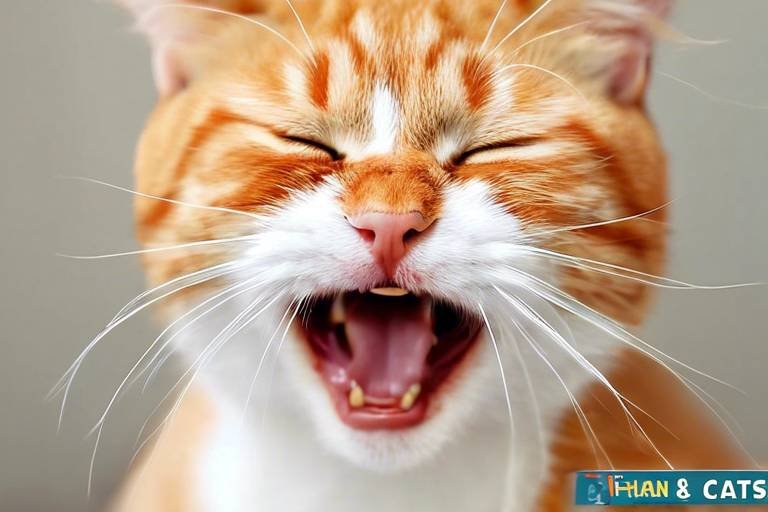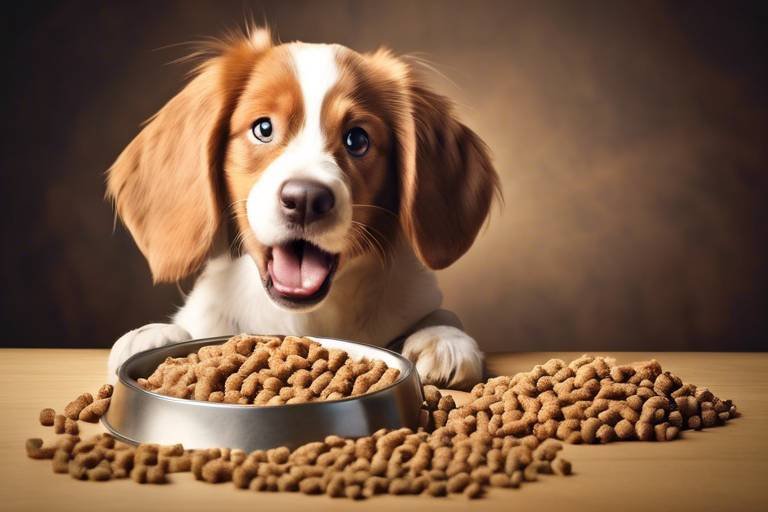Tips for Keeping Your Pet’s Weight Healthy
Maintaining your pet's weight is not just about aesthetics; it's about ensuring their overall health and longevity. A healthy weight can significantly reduce the risk of obesity-related health issues such as diabetes, joint problems, and even heart disease. So, how do we keep our furry friends in tip-top shape? It's all about a combination of nutrition, exercise, and regular check-ups. In this article, we'll dive deep into practical strategies that can help you manage your pet's weight effectively.
Pet obesity is becoming a widespread issue, and it's no surprise given our busy lifestyles and the abundance of high-calorie pet foods available. According to recent studies, over 50% of pets in the United States are overweight or obese. This alarming statistic should raise a red flag for pet owners everywhere. So, what causes pet obesity? A few common culprits include:
- Overfeeding: Many pet owners tend to give their pets too many treats or larger portions than necessary.
- Lack of Exercise: With busy schedules, pets often miss out on essential physical activity.
- Genetics: Some breeds are predisposed to weight gain.
Understanding these factors can help you take proactive steps to prevent obesity in your pet. Remember, a few extra pounds might not seem like a big deal, but they can lead to serious health complications down the line.
Knowing your pet's ideal weight is crucial for their health. But how do you determine what that weight is? It can vary based on breed, age, and overall health. A good starting point is to consult with your veterinarian. They can help you assess your pet's weight and provide guidelines based on their specific needs. Additionally, you can utilize body condition scoring, which is a simple method to evaluate your pet's body fat and overall health.
Body condition scoring (BCS) is a valuable tool that veterinarians use to assess a pet's weight. It typically uses a scale from 1 to 9, where:
| Score | Description |
|---|---|
| 1 | Severely Underweight |
| 4-5 | Ideal Weight |
| 7-9 | Overweight to Obese |
By regularly evaluating your pet using this scoring system, you can better understand their health status and make necessary adjustments to their diet and exercise routine.
Sometimes, visual cues can be just as effective as scoring systems. Here are some indicators to help you recognize if your pet is at a healthy weight:
- Rib Visibility: You should be able to feel your pet's ribs without excessive pressure.
- Waist Definition: When viewed from above, your pet should have a noticeable waist.
- Abdominal Tuck: There should be a slight tuck in the abdomen when viewed from the side.
By keeping an eye on these visual indicators, you can catch any potential weight issues early on.
Weight management charts can be a fantastic resource for tracking your pet's weight over time. These charts typically include the ideal weight range for different breeds and can help you monitor your pet's progress. By regularly updating the chart with your pet's weight, you can quickly spot trends and make necessary changes to their diet or exercise routine.
Don't underestimate the importance of regular veterinary visits. Your vet can provide tailored advice based on your pet's unique needs. They can also help you establish a weight loss plan if your pet is overweight. Regular check-ups allow for early detection of potential health issues, ensuring that your pet remains healthy and happy.
A balanced diet is the cornerstone of weight management for pets. It's essential to provide your furry friend with the right nutrients while keeping an eye on portion sizes. But what does a balanced diet look like? It includes a mix of proteins, fats, carbohydrates, vitamins, and minerals, all tailored to your pet's specific needs.
When selecting food for your pet, consider the following factors:
- Ingredients: Look for high-quality ingredients, with real meat as the first ingredient.
- Caloric Content: Pay attention to the caloric density of the food, as some brands pack more calories into smaller servings.
- Special Needs: If your pet has specific health issues, consult with your vet about the best food options.
Choosing the right food can make a world of difference in managing your pet's weight effectively.
When it comes to your pet's diet, you might be wondering whether to go homemade or stick with commercial options. Both have their pros and cons:
- Homemade Diets: Allows for control over ingredients but requires careful planning to ensure nutritional balance.
- Commercial Diets: Convenient and formulated to meet dietary needs, but can contain fillers or low-quality ingredients.
Ultimately, the choice depends on your pet's specific needs and your ability to provide a balanced diet. Consulting with a veterinarian can help you make the best decision.
Q: How often should I weigh my pet?
A: It's a good idea to weigh your pet every month, especially if they are on a weight loss plan. This will help you track their progress and make adjustments as needed.
Q: Can I give my pet treats?
A: Yes, but moderation is key. Opt for healthy treats and consider them part of your pet's daily caloric intake.
Q: What are some good exercises for my pet?
A: Activities like walking, playing fetch, or even agility training can be great ways to keep your pet active and engaged.
Q: How do I know if my pet is overweight?
A: Look for visual indicators like rib visibility, waist definition, and abdominal tuck. Regular vet check-ups can also provide a professional assessment.
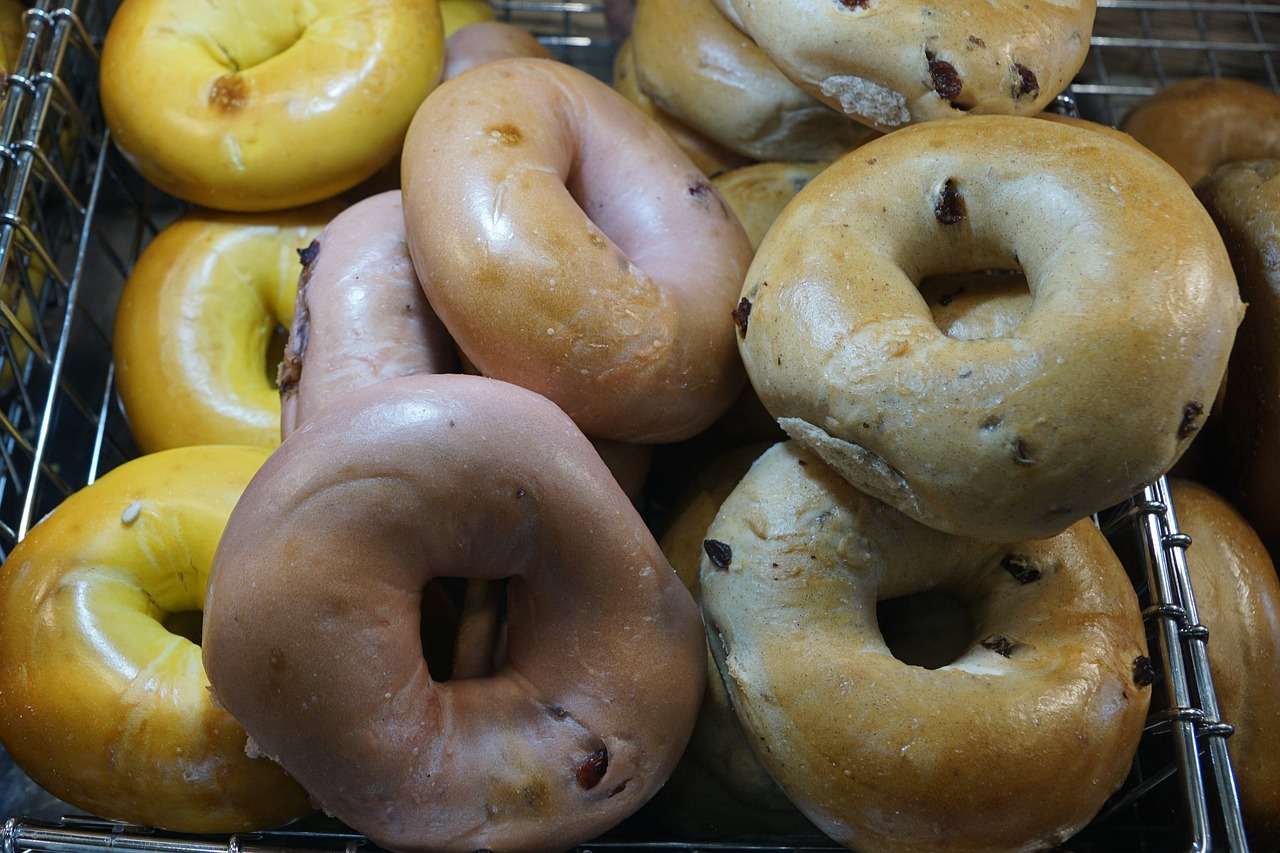
Understanding Pet Obesity
This article provides practical advice and strategies for maintaining your pet's ideal weight, ensuring their overall health and well-being while preventing obesity-related health issues.
Pet obesity is a growing concern among pet owners, and it’s not just a matter of aesthetics—it's a serious health issue that can lead to numerous complications. Just like humans, pets can suffer from a range of health problems due to excess weight, including diabetes, joint issues, and heart disease. In fact, studies indicate that over 50% of pets in the United States are overweight or obese. This alarming statistic should serve as a wake-up call for all pet owners.
So, what causes pet obesity? There are several factors at play, including:
- Overeating: Many pet owners inadvertently overfeed their pets, often out of love or a desire to keep them happy.
- Inactivity: A sedentary lifestyle is a significant contributor. Pets need regular exercise to maintain a healthy weight.
- Genetics: Some breeds are more prone to obesity than others, making it crucial to understand your pet's breed-specific tendencies.
- Age: As pets age, their metabolism slows down, and they may require fewer calories.
Understanding these factors is essential for preventing obesity. The risks associated with pet obesity are serious, and they can drastically reduce a pet's quality of life. For instance, overweight pets are more likely to experience:
- Increased risk of chronic diseases
- Reduced lifespan
- Difficulty in mobility
- Lower energy levels
Moreover, the financial implications of managing an obese pet can be significant. Treatments for obesity-related conditions can be expensive, and the costs of veterinary visits can add up quickly. Therefore, it’s not just a health issue but also a financial one.
In summary, pet obesity is a multifaceted problem that requires attention and action from pet owners. By understanding the causes and risks, you can take proactive steps to ensure your furry friend maintains a healthy weight. Remember, a healthy pet is a happy pet, and it’s never too late to start making changes!
Q: How can I tell if my pet is overweight?
A: You can assess your pet's weight by checking their body condition score and looking for visual indicators of health.
Q: What should I do if my pet is overweight?
A: Consult your veterinarian for a tailored weight loss plan that includes diet and exercise recommendations.
Q: Are certain breeds more prone to obesity?
A: Yes, some breeds are genetically predisposed to gain weight, so it's essential to monitor their diet and exercise closely.
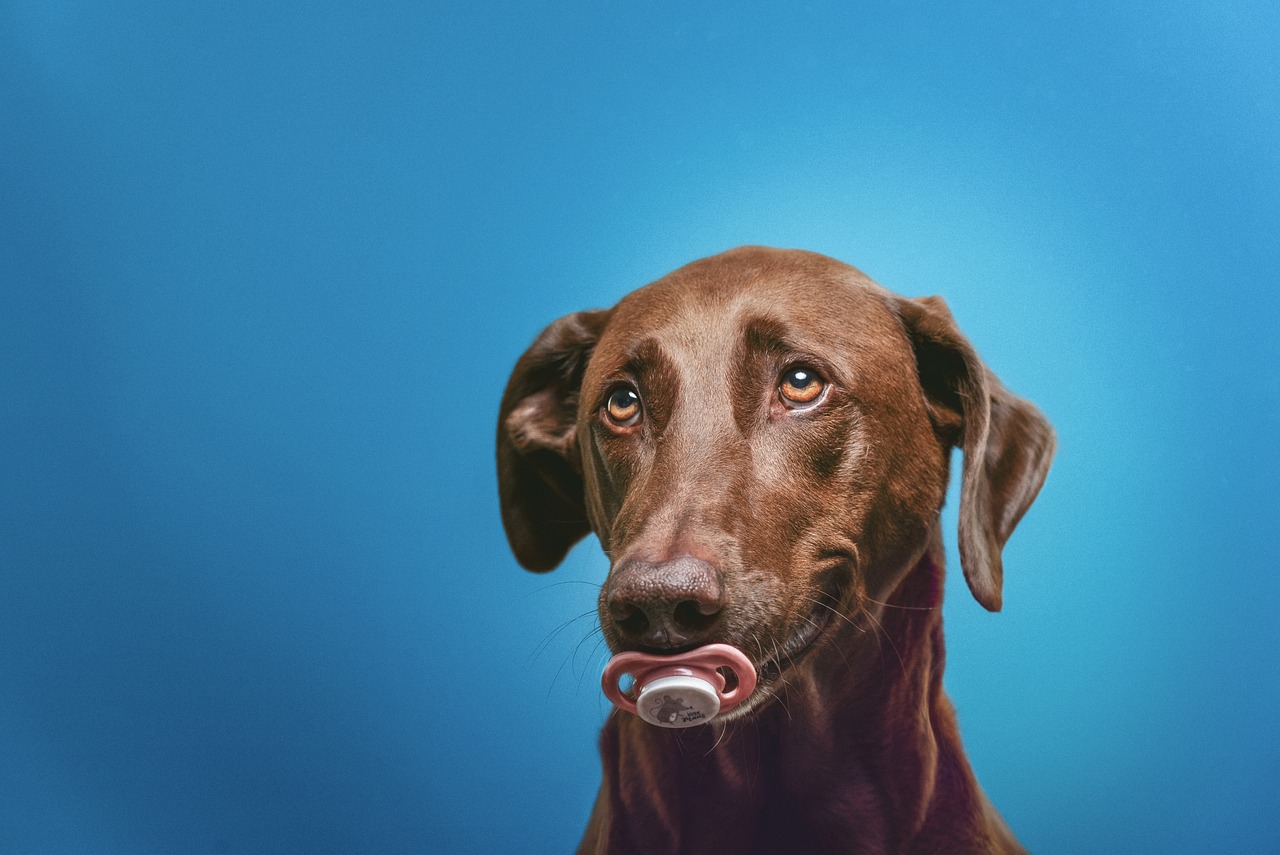
Identifying Ideal Weight
Determining your pet's ideal weight is crucial for their overall health and longevity. Just like humans, pets can suffer from a variety of health issues if they are overweight or underweight. The first step in ensuring your furry friend stays healthy is to understand what their ideal weight should be. So, how do you figure this out? It's not just about looking at a number on the scale; it involves a combination of factors including breed, age, and activity level.
One effective way to assess your pet's weight is through the Body Condition Score (BCS) system. This scoring system ranges from 1 to 9, where 1 indicates an extremely underweight pet and 9 signifies an obese one. Ideally, a score of 4 to 5 is considered optimal. To accurately use this system, you can refer to specific guidelines provided by veterinarians or pet care organizations. They often have visual aids that illustrate what a healthy pet looks like at each score level.
Body condition scoring is a simple yet powerful tool that helps you evaluate your pet's weight without needing a scale. To perform a BCS assessment, gently run your hands along your pet's ribs, spine, and waist. You should be able to feel their ribs without excessive pressure. If you can't feel them, your pet might be overweight, and if you can see them prominently, they may be underweight. This tactile method allows you to gauge your pet's health in a way that a number alone cannot.
Recognizing visual signs of a healthy weight can help pet owners monitor their pets effectively. Look for the following indicators:
- Waist Definition: When viewed from above, your pet should have a noticeable waistline.
- Rib Visibility: You should be able to feel your pet's ribs without excessive pressure, but they shouldn't be protruding.
- Belly Tuck: When viewed from the side, your pet's belly should tuck upwards towards the hind legs.
These visual cues can help you keep track of your pet's weight and make necessary adjustments to their diet or exercise routine.
Another useful tool for tracking your pet's weight over time is a weight management chart. These charts can help you visualize your pet's weight trends and determine if they are on the right track. Typically, these charts will include:
| Date | Weight (lbs) | Body Condition Score | Notes |
|---|---|---|---|
| 01/01/2023 | 25 | 5 | Healthy weight |
| 02/01/2023 | 26 | 5 | Maintain diet |
| 03/01/2023 | 27 | 6 | Increase exercise |
By regularly updating this chart, you can better understand your pet's weight fluctuations and make informed decisions about their health.
Lastly, regular veterinary visits are essential for maintaining your pet's weight. Your veterinarian can provide professional assessments and tailored advice based on your pet's specific needs. They can help you interpret your pet's weight trends and offer recommendations for diet and exercise to keep them at their ideal weight. Remember, prevention is always better than cure, and regular check-ups can help catch any potential issues before they escalate.
Body Condition Scoring
Body condition scoring (BCS) is a fantastic tool that pet owners can use to evaluate their furry friends' weight and overall health. Think of it as a way to measure how your pet's body looks and feels, similar to how a tailor would take your measurements for a perfectly fitted suit. The scoring system typically ranges from 1 to 9, where 1 indicates an extremely thin pet and 9 signifies an obese one. A score of 5 is considered ideal, where your pet has a visible waist and you can feel their ribs without excessive pressure.
To utilize body condition scoring effectively, you'll need to assess several factors. First, look at your pet from above and the side. Does your pet have a defined waist? Can you easily feel their ribs? These visual cues are essential indicators of your pet's health. It's important to remember that different breeds may have varying ideal weights, so always consider your pet's specific characteristics when evaluating their condition.
Here’s a quick breakdown of the BCS scale:
| Score | Description |
|---|---|
| 1 | Emaciated - Very thin, ribs and bones are visible. |
| 2 | Underweight - Ribs are easily felt, minimal fat. |
| 3 | Ideal - Ribs can be felt without excess fat. |
| 4 | Overweight - Ribs are not easily felt, some fat covering. |
| 5 | Obese - Ribs cannot be felt, significant fat covering. |
Using this scoring system regularly can help you catch any weight changes early on, allowing you to make necessary adjustments to your pet's diet or exercise routine. Remember, maintaining a healthy weight is not just about aesthetics; it's about ensuring your pet lives a long, happy, and active life.
If you have any concerns about your pet's weight or how to score their body condition, don't hesitate to consult your veterinarian. They can provide tailored advice and support to help you keep your pet in tip-top shape!
- What is the best way to assess my pet's body condition score? - The best way is to visually inspect your pet and feel for their ribs and waistline. You can also consult a veterinarian for a professional assessment.
- How often should I check my pet's body condition score? - It's a good idea to check every few months or whenever you notice changes in your pet's behavior or appearance.
- Can body condition scoring be used for all pets? - Yes, body condition scoring can be applied to most pets, but it's essential to consider breed-specific guidelines.
Visual Indicators of Weight
Monitoring your pet's weight is not just about numbers on a scale; it's also about observing their physical appearance. Just like how we can tell if a friend has gained or lost weight by looking at them, pets offer similar visual cues that can indicate whether they are at a healthy weight. One of the first things to look for is the waistline. When viewed from above, your pet should have a noticeable waist that narrows between the ribcage and the hips. If their body appears more cylindrical, it might be time to evaluate their diet and exercise routine.
Another key visual indicator is the ribs. You should be able to feel your pet's ribs without too much pressure, but they shouldn’t be protruding sharply. If you have to dig your fingers in to feel them, your pet may be overweight. Similarly, when you look at your pet from the side, you should see a slight tuck in their abdomen. This is a sign of a healthy weight, whereas a sagging belly can indicate excess weight.
Additionally, muscle tone plays a significant role in assessing your pet's weight. A healthy pet should have defined muscles, especially in the limbs and neck. If your pet feels soft and lacks muscle definition, it could be a sign that they are carrying extra pounds. Regular playtime and exercise not only help maintain a healthy weight but also contribute to overall muscle development, making your pet look fit and active.
Keep in mind that different breeds have different body types, so what looks healthy for one breed may not apply to another. For example, a Greyhound will naturally have a leaner build compared to a Bulldog. Therefore, it's essential to understand your pet's breed-specific characteristics when assessing their weight visually. If you’re ever in doubt, consult your veterinarian for a professional opinion.
To summarize, here are some visual indicators to keep an eye on:
- Waistline: Should be visible from above.
- Rib Visibility: Ribs should be felt but not seen.
- Abdominal Tuck: A slight tuck should be present.
- Muscle Tone: Defined muscles indicate a healthy weight.
By regularly observing these visual indicators, you can take proactive steps to ensure your pet maintains a healthy weight, contributing to their overall well-being and longevity. Remember, a happy pet is a healthy pet!
Q: How often should I check my pet's weight?
A: It's advisable to check your pet's weight monthly, but more frequent checks may be necessary if they are on a weight-loss program or have health concerns.
Q: What should I do if I suspect my pet is overweight?
A: Consult your veterinarian for a thorough assessment and to create a tailored weight management plan that includes diet and exercise.
Q: Can I feed my pet table scraps?
A: While some table scraps are safe, many human foods can be harmful to pets. It's best to stick to pet-specific foods and treats to maintain a balanced diet.
Q: How can I encourage my pet to exercise more?
A: Engage your pet with interactive toys, schedule regular playtime, or take them for daily walks to increase their activity levels.
Weight Management Charts
This article provides practical advice and strategies for maintaining your pet's ideal weight, ensuring their overall health and well-being while preventing obesity-related health issues.
Pet obesity is a growing concern, leading to various health problems. This section explores the causes, risks, and statistics surrounding pet obesity to raise awareness among pet owners.
Determining your pet's ideal weight is crucial for their health. This section discusses how to assess your pet's weight and what factors influence their healthy weight range.
Body condition scoring is a useful tool for evaluating your pet's weight. This subsection explains the scoring system and how to use it to gauge your pet's health.
Recognizing visual signs of a healthy weight can help pet owners monitor their pets effectively. This subsection outlines key indicators to look for in your pet's appearance.
Weight management charts are invaluable tools for pet owners striving to maintain their furry friends at a healthy weight. These charts serve as a visual representation of your pet's weight over time, making it easier to identify trends and make necessary adjustments. By regularly tracking your pet's weight, you can detect any concerning changes early on, which is crucial in preventing obesity-related health issues.
To create an effective weight management chart, start by recording your pet's weight at regular intervals, such as weekly or monthly. This will allow you to see patterns in their weight gain or loss. It's essential to consider various factors that could affect your pet's weight, including age, breed, and activity level. For example, a young, energetic dog may have a different ideal weight range compared to an older, less active one.
| Date | Weight (lbs) | Notes |
|---|---|---|
| 01/01/2023 | 25 | Initial Weight |
| 02/01/2023 | 24.5 | Started new diet |
| 03/01/2023 | 24 | Increased exercise |
| 04/01/2023 | 23.5 | Weight loss goal achieved! |
When interpreting your weight management chart, look for consistent patterns rather than focusing on daily fluctuations, which are normal. If you notice a gradual increase in weight over several weeks, it may be time to reassess your pet's diet and exercise routine. Conversely, if your pet is losing weight too quickly, it could signal an underlying health issue that requires veterinary attention.
In summary, weight management charts not only help you keep track of your pet's weight but also empower you to make informed decisions regarding their health. Regular monitoring combined with a proactive approach to diet and exercise can significantly enhance your pet's quality of life.
Regular veterinary visits are essential for maintaining your pet's weight. This subsection highlights the importance of professional assessments and tailored advice from your veterinarian.
A balanced diet plays a significant role in weight management for pets. This section covers essential nutrients, portion control, and dietary adjustments to promote a healthy weight.
Selecting the right food is critical for your pet's weight management. This subsection discusses factors to consider when choosing pet food, including ingredients and caloric content.
Deciding between homemade and commercial diets can impact your pet's health. This subsection compares the benefits and drawbacks of each option to help pet owners make informed choices.
- How often should I weigh my pet? It's recommended to weigh your pet at least once a month to monitor any changes in their weight.
- What should I do if my pet is overweight? Consult with your veterinarian to create a tailored diet and exercise plan for your pet.
- Are there specific breeds that are more prone to obesity? Yes, certain breeds like Labrador Retrievers and Bulldogs are more susceptible to weight gain.
- Can I use human food as treats for my pet? Some human foods are safe for pets, but it's essential to research which ones are appropriate and in what quantities.
Regular Vet Check-Ups
This article provides practical advice and strategies for maintaining your pet's ideal weight, ensuring their overall health and well-being while preventing obesity-related health issues.
Pet obesity is a growing concern, leading to various health problems. This section explores the causes, risks, and statistics surrounding pet obesity to raise awareness among pet owners.
Determining your pet's ideal weight is crucial for their health. This section discusses how to assess your pet's weight and what factors influence their healthy weight range.
Body condition scoring is a useful tool for evaluating your pet's weight. This subsection explains the scoring system and how to use it to gauge your pet's health.
Recognizing visual signs of a healthy weight can help pet owners monitor their pets effectively. This subsection outlines key indicators to look for in your pet's appearance.
Weight management charts provide a reference for pet owners to track their pet's weight over time. This subsection discusses how to interpret these charts for effective monitoring.
When it comes to keeping your pet healthy, regular veterinary check-ups are absolutely essential. Think of your veterinarian as the coach for your pet's health team. Just like athletes need their coaches to assess their performance and make adjustments, your furry friends need their vets to monitor their health and weight. During these visits, vets can provide tailored advice based on your pet's unique needs and lifestyle. They can help identify any potential health issues before they become serious, which is crucial for preventing obesity-related diseases such as diabetes, joint problems, and heart disease.
During a typical check-up, your vet will assess your pet's weight, body condition, and overall health. They might use a body condition score (BCS) system, which rates your pet on a scale from 1 to 9, helping you understand where your pet stands in terms of ideal weight. This scoring system is a fantastic way to visualize your pet's health status and make necessary adjustments to their diet or exercise routine.
Additionally, regular visits allow for preventive care measures. Your vet can recommend vaccinations, dental care, and parasite control, all of which contribute to your pet's overall well-being. They can also provide guidance on the best nutrition plan tailored to your pet’s specific needs, especially if they are overweight or underweight.
Moreover, don’t underestimate the importance of keeping a consistent schedule for these check-ups. Aim for at least once a year for healthy pets, but if your pet is overweight or has health issues, more frequent visits may be necessary. Consistency is key! Just like we keep track of our own health, we must do the same for our pets. Here’s a quick rundown of what to expect during these visits:
| Check-Up Component | Description |
|---|---|
| Weight Measurement | Your vet will weigh your pet and compare it to previous visits. |
| Body Condition Score | Assessment of your pet’s body fat and muscle condition. |
| Health History Review | Discussion about any changes in your pet's behavior or health. |
| Diet and Nutrition Advice | Recommendations tailored to your pet’s needs. |
| Preventive Care | Updates on vaccinations and parasite prevention. |
In conclusion, regular vet check-ups are not just a formality; they are a vital part of maintaining your pet's health and managing their weight effectively. So, make that appointment today! Your pet deserves the best care possible.
A balanced diet plays a significant role in weight management for pets. This section covers essential nutrients, portion control, and dietary adjustments to promote a healthy weight.
Selecting the right food is critical for your pet's weight management. This subsection discusses factors to consider when choosing pet food, including ingredients and caloric content.
Deciding between homemade and commercial diets can impact your pet's health. This subsection compares the benefits and drawbacks of each option to help pet owners make informed choices.
- How often should I take my pet to the vet? Aim for at least once a year, but more frequent visits may be needed for overweight pets.
- What is the ideal weight for my pet? This varies by species and breed; consult your vet for specifics.
- Can I feed my pet homemade food? Yes, but ensure it meets their nutritional needs; consult your vet for guidance.
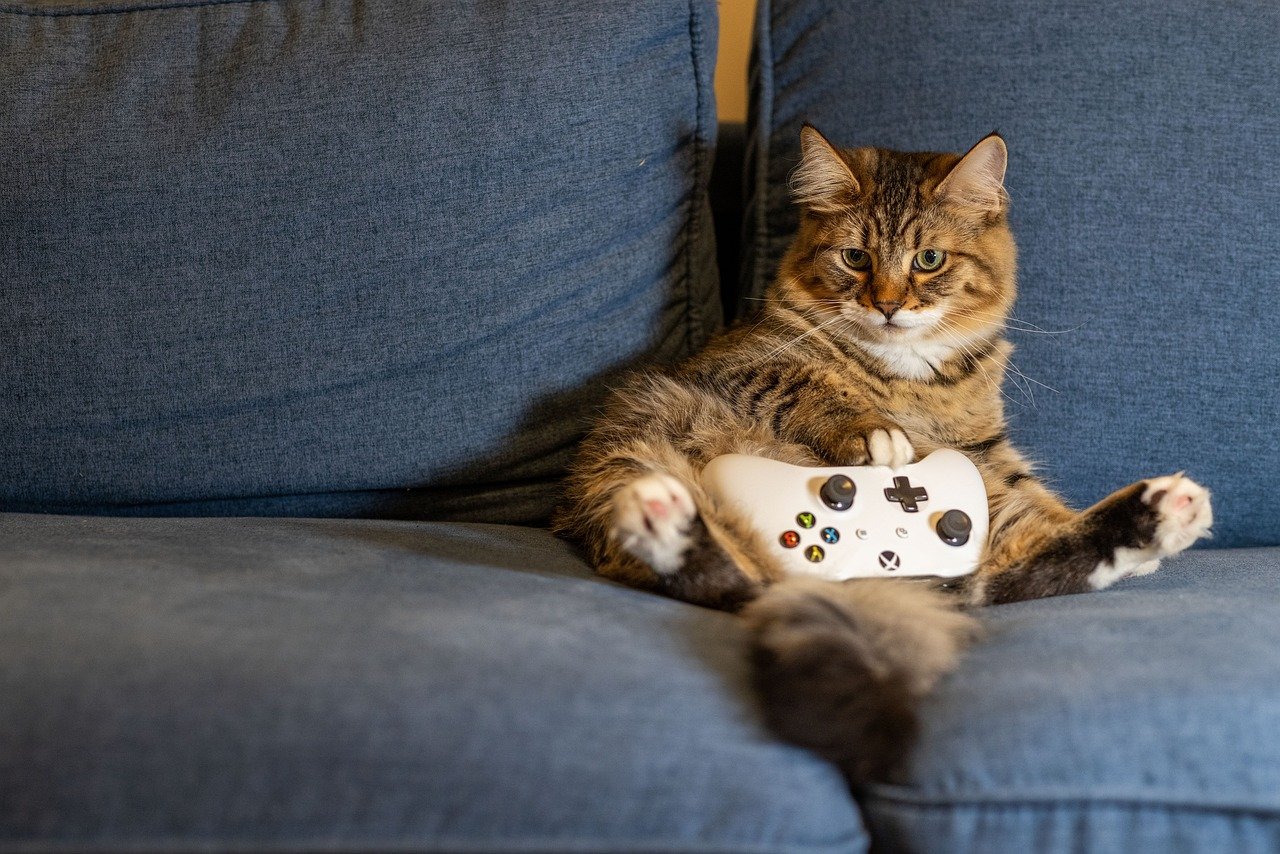
Nutrition and Diet
When it comes to keeping your furry friend at a healthy weight, nutrition and diet play a pivotal role. Just like us, pets need a balanced diet to thrive, and understanding what that entails is crucial for their overall health. An ideal diet isn't just about filling their bowls; it’s about providing the right mix of nutrients to keep them energetic and happy. Did you know that a pet’s diet can directly impact their weight and, consequently, their health? This is why being vigilant about what goes into their food is essential.
First off, let’s talk about the essential nutrients your pet needs. A well-rounded diet for dogs and cats typically includes proteins, carbohydrates, fats, vitamins, and minerals. Each of these nutrients plays a unique role in maintaining your pet's health. For instance, proteins are crucial for muscle development and repair, while fats provide energy and support cell function. Carbohydrates, on the other hand, are a source of quick energy, and vitamins and minerals help in various bodily functions, from bone health to immune support.
One of the most important aspects of managing your pet's weight is portion control. Just because your pet begs for more food doesn’t mean they need it! Overfeeding is a common issue among pet owners, often leading to weight gain. To avoid this, it’s essential to follow the feeding guidelines provided on pet food packaging or consult your veterinarian for personalized advice. You might be surprised at how little food your pet actually needs to maintain a healthy weight.
| Nutrient | Function | Sources |
|---|---|---|
| Proteins | Muscle development and repair | Meat, fish, eggs |
| Carbohydrates | Quick energy source | Grains, vegetables |
| Fats | Energy and cell function | Fish oil, chicken fat |
| Vitamins | Support various bodily functions | Fruits, vegetables |
| Minerals | Bones and teeth health | Meat, dairy, greens |
Now, let’s dive into a common dilemma: homemade vs. commercial diets. Choosing between these two options can be challenging for pet owners. Homemade diets allow you to control the ingredients, ensuring that your pet gets high-quality food without fillers. However, they can also lead to imbalances if not carefully planned. On the other hand, commercial diets are formulated to meet the nutritional needs of pets but can sometimes include less desirable ingredients. It’s essential to weigh the pros and cons of each option and, if you opt for homemade meals, consult with a veterinarian or a pet nutritionist to ensure your pet’s diet is balanced.
In conclusion, maintaining your pet's ideal weight through proper nutrition and diet is a journey that requires attention and care. By understanding the nutrients your pet needs, controlling portions, and making informed dietary choices, you can help your furry friend live a longer, healthier life. Remember, a happy pet is a healthy pet!
- How do I know if I'm feeding my pet the right amount? Check the feeding guidelines on the pet food packaging and consult with your veterinarian for personalized advice.
- Can I give my pet table scraps? While some human foods are safe for pets, many can be harmful. It's best to stick to pet-specific foods.
- What should I do if my pet is overweight? Consult your veterinarian to develop a weight loss plan that includes a balanced diet and regular exercise.
Choosing the Right Food
When it comes to keeping your furry friend at a healthy weight, is absolutely essential. Just like us, pets need a balanced diet that meets their specific nutritional requirements to thrive. But with so many options out there, how do you know what’s best for your pet? It can feel like navigating a maze, but don't worry! We’re here to break it down for you.
First off, let’s talk about ingredients. Always check the label! The first ingredient should ideally be a high-quality protein source, such as chicken, beef, or fish. This is crucial because pets are primarily carnivores, and they need protein for muscle development and energy. Avoid foods that list fillers, like corn or soy, as their primary ingredients. These ingredients may not provide the necessary nutrients and can lead to weight gain over time.
Next, consider the caloric content of the food. Different pets have different energy needs based on their size, age, and activity level. For instance, a playful puppy will require more calories than a senior dog who prefers lounging around. To help you with this, many pet food brands provide feeding guidelines on their packaging, which can serve as a good starting point. However, it's important to adjust these recommendations based on your pet's individual needs. Remember, overfeeding can quickly lead to unwanted weight gain!
Another factor to consider is whether to opt for commercial diets or homemade meals. Commercial diets are convenient and formulated to meet the nutritional needs of pets, while homemade diets can be tailored specifically to your pet's tastes and health requirements. However, if you go the homemade route, it’s crucial to consult with a veterinarian or a pet nutritionist to ensure that your pet is getting all the necessary nutrients. A poorly balanced homemade diet can do more harm than good.
Don’t forget about special dietary needs. If your pet has specific health concerns, such as allergies or diabetes, you may need to choose a specialized diet that addresses these issues. Many brands offer veterinary diets that are specifically formulated for pets with health problems. Always consult your vet before making any significant changes to your pet's diet, as they can provide tailored advice based on your pet's health history.
Lastly, be mindful of portion control. Even the best food can lead to weight gain if you’re not careful with how much you’re feeding. Use measuring cups or a kitchen scale to ensure that you’re providing the right amount of food. It can be tempting to give your pet extra treats or snacks, but these can add up quickly. Instead, consider using healthy snacks like carrot sticks or apple slices as rewards.
In summary, choosing the right food for your pet is a combination of understanding their nutritional needs, selecting high-quality ingredients, and being mindful of portion sizes. By doing your homework and consulting with your vet, you can ensure that your pet enjoys a balanced diet that supports a healthy weight.
- What should I look for in pet food labels?
Look for high-quality protein as the first ingredient, avoid fillers, and check for a balance of nutrients. - Can I feed my pet homemade food?
Yes, but consult with a veterinarian to ensure it meets all nutritional needs. - How can I control my pet's weight through diet?
Measure food portions, choose high-quality food, and avoid excessive treats.
Homemade vs. Commercial Diets
When it comes to deciding between homemade and commercial diets for your furry friend, the choice can feel overwhelming. Both options have their pros and cons, and understanding them is crucial for your pet's health. Homemade diets allow you to have complete control over the ingredients, ensuring that your pet gets the freshest and most nutritious food possible. You can tailor meals to your pet's specific needs, whether they have allergies, sensitivities, or particular dietary requirements. Imagine whipping up a delicious meal that you know is packed with the right nutrients—it's like being a chef for your pet!
However, crafting a balanced homemade diet isn't as simple as it seems. It requires knowledge about pet nutrition and careful planning to ensure that your pet receives all essential vitamins and minerals. Without proper guidance, you might unintentionally create a meal that lacks vital nutrients, which could lead to health issues over time. Therefore, consulting with a veterinarian or a pet nutritionist is highly recommended before diving into homemade meals.
On the other hand, commercial diets offer convenience and are formulated to meet your pet's nutritional needs. These products are typically backed by research and come in various options, including dry kibble, wet food, and even freeze-dried raw diets. Most commercial pet foods are designed to provide a balanced diet, making it easier for pet owners to ensure their pets are getting the right nutrients without the hassle of meal prep. However, not all commercial diets are created equal. Some brands may include fillers, artificial additives, and low-quality ingredients, which can negatively impact your pet's health.
| Aspect | Homemade Diets | Commercial Diets |
|---|---|---|
| Control over Ingredients | High | Low |
| Convenience | Low | High |
| Cost | Varies | Generally lower |
| Balanced Nutrition | Depends on knowledge | Formulated by experts |
Ultimately, the decision between homemade and commercial diets boils down to your lifestyle, your pet's specific needs, and your willingness to invest time in meal planning. If you choose to go the homemade route, consider starting with simple recipes and gradually introducing variety. If you lean towards commercial diets, do your research to find high-quality brands that prioritize your pet's health. Remember, the goal is to keep your pet happy and healthy, no matter which option you choose!
- Can I mix homemade and commercial diets? Yes, many pet owners choose to do this. Just ensure that the combination still meets your pet's nutritional needs.
- How do I know if I'm providing a balanced homemade diet? Consulting with a veterinarian or a pet nutritionist is the best way to ensure a balanced diet.
- Are there specific ingredients I should avoid in commercial diets? Yes, look out for fillers, artificial colors, and low-quality meat sources. Always read the ingredient list carefully.
Frequently Asked Questions
- What are the main causes of pet obesity?
Pet obesity can stem from a variety of factors, including overfeeding, lack of exercise, and genetic predisposition. Just like humans, pets can gain weight if they consume more calories than they burn. Additionally, certain breeds may be more prone to obesity, making it essential for pet owners to stay informed about their pet's specific needs.
- How can I determine my pet's ideal weight?
To find your pet's ideal weight, consult your veterinarian, who can provide guidance based on your pet's breed, age, and overall health. You can also use body condition scoring, which evaluates your pet's body shape and fat distribution, to help gauge whether they are at a healthy weight.
- What is body condition scoring?
Body condition scoring is a system used to assess a pet's body fat and overall health. It typically ranges from 1 to 9, with 1 being severely underweight and 9 being obese. This scoring helps pet owners identify whether their pets are at a healthy weight and allows for better management of their diet and exercise.
- How often should I take my pet to the vet for weight checks?
Regular vet check-ups are crucial for monitoring your pet's weight. Ideally, you should schedule visits at least once a year, but more frequent visits may be necessary for pets that are overweight or have specific health concerns. Your veterinarian can provide tailored advice to help maintain your pet's ideal weight.
- What role does diet play in my pet's weight management?
A balanced diet is vital for maintaining a healthy weight in pets. It’s important to choose high-quality pet food that meets your pet's nutritional needs while controlling portion sizes. Understanding your pet's caloric requirements can help prevent overfeeding and promote a healthy lifestyle.
- Should I feed my pet homemade food or commercial diets?
Both homemade and commercial diets have their pros and cons. Homemade diets allow for greater control over ingredients, but they require careful planning to ensure they meet all nutritional needs. On the other hand, commercial diets are convenient and often formulated to provide balanced nutrition. Consult your vet to determine the best option for your pet.
- What are some visual indicators of a healthy weight in pets?
Visual indicators of a healthy weight include a defined waistline, visible ribs without excessive fat covering, and a slight tuck in the abdomen. Regularly checking these features can help you monitor your pet's weight and overall health effectively.
- How can I help my pet lose weight safely?
To help your pet lose weight safely, focus on gradual changes. Start by adjusting their diet, reducing portion sizes, and increasing physical activity. Incorporate playtime and walks into their routine, and consult your vet for a tailored weight loss plan that suits your pet's specific needs.







